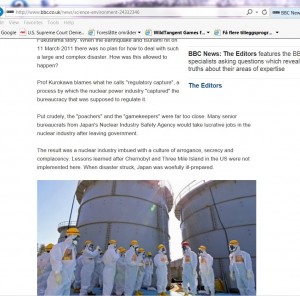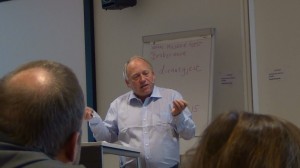
http://www.fiskeridir.no/om-oss/telefon-og-e-post-til-ansatte/ressursavdelingen/reguleringsseksjonen/terje-halsteinsen
Terje Halsteinsen gave a talk on the regulations and rules concerning taretrawlers – questions of electronic tracking and more.
Unfortunately he stated that taretrawlers, that is the seaweed harvesting trawlers were treated in the same way as any fishing boat with the same rights and privileges, he went further to explain the law of first right, that is the law that says that the person who has established use over a long period of time has the first right.
He quoted from a outdated law, my colleague Johan put him right with a up to date copy of the regulations regarding fishing boats and fishing, it says that taretrawlers have the right to trawl regardless of first right. The original law stated that no trawling is to be allowed within 1 nautical mile of any areas used for lobster, crab or any other kind of activity. It is very strange that such a senior official should not know the current regulations.
It is also very sad that an American owned company (fmc biopolymers) should be able to walk all over Norwegian fisherman’s rights. But that is apparently the case.
After this there was a talk by the miljødirektoratet stating a little of their history and what their job is and their affiliations
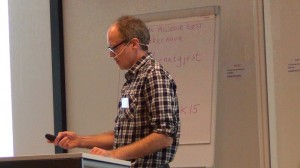
Followed by an interesting talk from vikna kommune, Ivar Grindvik https://www.venstre.no/artikkel/2011/02/13/vikna-venstre-arsmelding-2010/
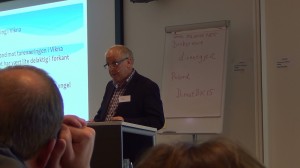
He mentioned major changes in the environment and how concerned everybody was particularly as the fisheries minister owns the biggest salmon farming business in the country – he mentioned that he felt that if the marine biologists were to work with local people it could be a very good combination – there have been big changes in the bird populations since the trawling started, but that could be due to other factors. He went on to mention co2 and how seaweed binds this, how this was a big international issue – and should be tackled at the local level – “this is the job of us politicians. ”
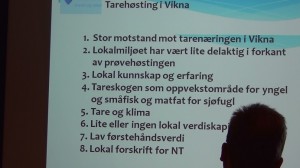
he finished with “The rights of local people are being brushed aside for a monopoly.”
Martin Nilsen from Froya Kommune https://no.wikipedia.org/wiki/Martin_Nilsen
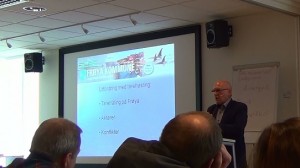
said that there was no great conflict in Froya with the taretrawlers but there had been some mention of crab fishermen and their equipment. He then said that the picture was not clear over what happened to immature fish which lived in the seaweed forests once they had been cleared – this is something that needs research.
He also mentioned growing seaweed and how there are big possibilities and that there is a firm cultivating sugar kelp nearby.
Odd Inge Viken from Roan Fiskarlag spoke next http://www.proff.no/selskap/roan-fiskarlag/bessaker/-/Z0IC0VB3/
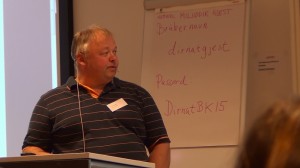
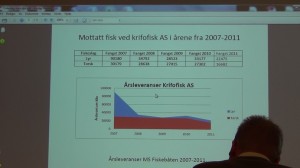
He said that after taretrawling pollock (lyr) had diminished hugely in numbers. I do know that there have been appeals from Roan Kommune to the minister concerned and that there have been no results from the meeting.
here is a little snip from that document
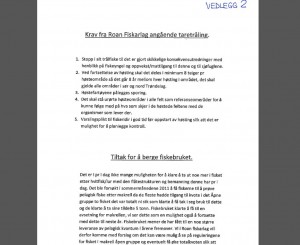
Next to speak was Jan Henrik Sandberg from Norges fiskarlag
https://no.linkedin.com/pub/jan-henrik-sandberg/6/100/5a4
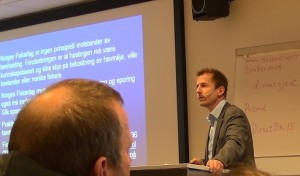
Said that Norges fiskarlag has always been skeptical about taretråling
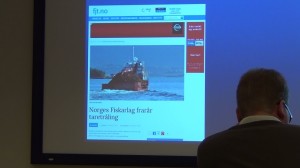
Feel that the trial harvesting of 30,000 tons in the lofoten areas has not been researched enough, a letter sent to the fiskeriedirektoratet went further and said this was not good administrative practice.
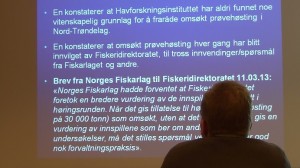
Taretråling had been left out of the
Marine strategy plan for Trøndelag
Research strategy plan has 21 research updates
And the regions marine development plan
Further there was not enough information on the sea urchin problem(there are a number of unanswered questions we have too), not enough known about the effects on immature fish, he also mentioned the decrease in pollock(lyr) numbers and quoted figures from fmcs own site to support this.
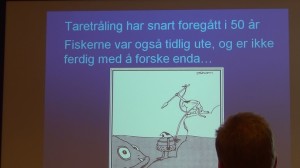
This cartoon shows quite nicely how many view the research done on tretråling – it says they’ve soon been harvesting for 50 years, fishermen were also out early and are not yet finished with research.
The next speaker was Ole Damm Kvilhaug rastoffchef at fmc biopolymer
https://www.linkedin.com/in/ole-damm-kvilhaug-88670a44/
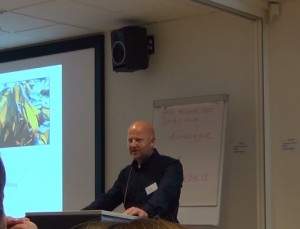
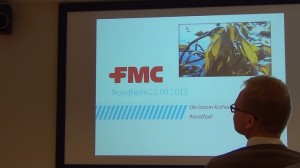
Said he felt this meeting was more constructive than the previous meeting at Runde http://www.google.no/url?sa=t&rct=j&q=&esrc=s&frm=1&source=web&cd=4&ved=0CEEQFjAD&url=http%3A%2F%2Fwww.fiskeridir.no%2Fcontent%2Fdownload%2F26871%2F243270%2Fversion%2F1%2Ffile%2Freferat-taremote-runde-16-17-april-2012.pdf&ei=f3lUUsroGse84ATfjIGACA&usg=AFQjCNGuPLeiSgwosXAlHkJfv8UwauRfQA which he felt had been confrontational.
He explained a bit about his background which included being a trawler skipper in the north sea, university in Tromsø, 12 years as a case handler for the fiskeriedirektoratet and 2 years with Rogaland county where he developed taretråling in that area.
He then spoke about FMC and the history of taretråling on the Norwegian coast.
After his talk Johan Breivik asked him about the illegal trawling at Hustadvika (the first and only proven case of illegal taretråling in Norway) He explained it was a combination of poor maps etc. He fully supported his men and said that they were good workmen and not out to do anything bad. in fact shortly after the incident one of the skippers who trawled the bay retired.
Elin Stølen asked if they could remove the seaweed washed ashore after taretråling, Ole Damm explained they were not allowed to do this.
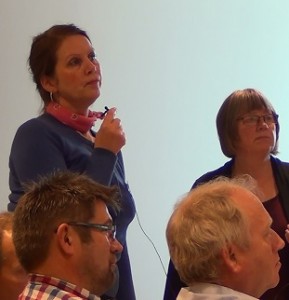
I asked him about fmc corporations record concerning the environment, i mentioned polluting the Mississippi river, and various other cases, i also mentioned the production of carborufan or furadan http://www.lionconservation.org/lion-poisoning.html and explained that it was having a devastating effect on the wildlife in Africa, and after causing the death of over 1 million birds in the USA was banned there – i went on the mention the mining of lithium and explained that it is destroying permanently one of the most fragile ecosystems in the world – he explained he knew nothing of this.
Strange that such a senior executive should be so lacking in knowledge of the corporation he works for – its also interesting to note that he did not ask for any information from me on these matters, but others did!
Trond Kjønnø http://www.valagro.com/en/corporate/group/algea gave us a talk on the company he works for ALGEA
.
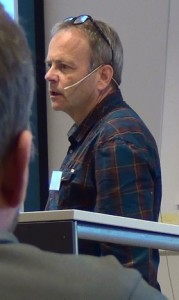
The theme for the talk was “minimum environmental impact” this is also on Algeas website. the site also explains that this company is active in over 40 countries.
One very interesting fact that came out was that Algea thinks that harvesting from the wild is not such a good idea and wants to concentrate on cultivation –
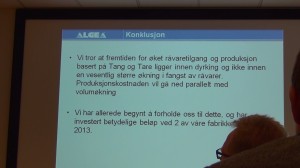
Double clicking will enlarge the image.
During questions he was asked by Torjan Bodvin if there had been any long term research done on the impact on this type of harvesting in the areas they were harvesting on the ecosystem. (The type of harvesting algea does is clipping the fronds by machine – not removing the whole plant as in Taretråling.)
Trond explained that Algea had none. But had done some research on birds in conjunction with researchers. He was asked if it could be called sustainable if they had no documentation – he replied it is sustainable for the seashore because we leave a good deal of the plant to grow again.
Torjan Bodvin http://www.imr.no/om_havforskningsinstituttet/ansatte/b/torjan_bodvin/en
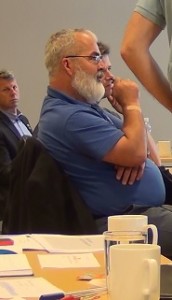
It was interesting to see Torjans concern as he later said in an interview with NRK http://www.nrk.no/sognogfjordane/taretraling-er-blitt-milliardnaering-1.11288758 that that there were no big consequences from the current harvest in North trondelag.
